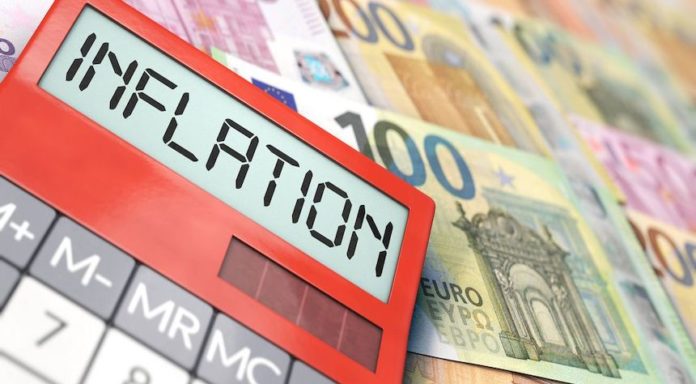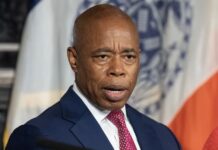Andrew B. Wilson and Aaron Hedlund
Imagine a helicopter flying over a remote village dropping $1,000 worth of bills from the skies. The helicopter drops $1,000 in bills from the sky, and villagers are happy to grab it all and head out to find ways to spend large sums of money. Are their lives transformed?
Milton Friedman said that it was not true. In 1969, Milton Friedman used “helicopter cash” to explain the inflationary effects of “free” money. The additional money would only increase prices as long as there was no change in the supply and provision of goods and services within the village.
The Nobel Prize-winning economist would have been shocked to see how a misinterpretation of his cautionary tale was brought to life in Washington, D.C. policymaking today. The federal government has been operating a massive fiscal and monetary helicopter operation since 2021. It aims to drop trillions of dollars of money into an economy that is not even in a crisis. Inflation has risen to a record 40-year high.
Inflation remained low despite the fact that the federal government spent trillions of dollars in 2020. What is the explanation? There were no helicopter drops in 2020 to encourage people to spend. Instead, the dreadful specter that a new, deadly pandemic would strike combined with government orders to “stay at home,” made it difficult for people to spend and prevented them from going to work. The economy was left in a semi-coma. Federal aid packages were created to protect the financial health of small businesses and families and to strengthen the relationship between workers and employers. It was hoped that the economy would recover quickly and without long-term damage when it was time for a full recovery. It was awakened. The third quarter saw the greatest GDP rebound in recent memory. After the worst GDP decline in modern history, which occurred in the second quarter of 2020. When the economy contracted at an annualized rate greater than 30 percent, it experienced the largest GDP drop of all time. In early 2021, the GDP had essentially returned to normal and was generally open for business.
What caused inflation to spike suddenly in spring 2021?
The helicopter was no longer a rescue mission and the airdrop continued as a goodwill mission even though there wasn’t an emergency. The mission began to look like Friedman’s “generous” cash bombing that does nothing. It’s worse than this. Today’s futile mission is a serious threat to the economy, and the nation, because of its sheer size.
The Fiscal and Monetary Roots Of Inflation
The economy was in a strong recovery when President Biden signed into law the $1.9 trillion American Rescue Plan bill in March 2021. It didn’t need a huge drop in money. The demand was strong and the consumers were eager to return to their normal lives. The administration decided to abandon fiscal discipline at this time. To pursue sound monetary, fiscal, and political policies, it abandoned the implicit agreement between the executive and Federal Reserve branches.
In the normal course of events, the Federal Reserve sets the inflation target. The White House and Congress must then scale back their ambitions to limit spending and reduce public debt. The problem is when the federal government indulges in excessive spending. Inflation becomes both a fiscal problem and a financial problem. People who believe that the newly issued debt will not be paid off by future surpluses will reasonably expect the government to rely on high-flying, chronic inflation to solve the repayment problem. This would mean that the money value will drop. The currency’s value would be destroyed, which would result in everyone losing their pensions and savings as well as their paychecks.
Keep in mind that the U.S. federal government’s share of Gross Domestic Product is now more than 100 percent. This is an increase of 35 percent from 12 years ago. This makes it much more costly to rely on higher rates of interest to combat inflation.
Even worse, the so-called Rescue Plan was part of a wider anti-work/anti-energy agenda. It severely restricted supply created labor shortages and placed artificial restrictions on production and output.
Although there is no single solution, it is important to consider the possibility of several related monetary, fiscal, and economic reforms. This means:
- Not waiting passively for inflation to fall on its own. The Federal Reserve must do everything necessary to bring inflation back under control, regardless of the short-term pain involved in raising interest rates.
- Top federal officials should stop pointing the finger of blame at “price gouging” and “corporate greed,” which is complete nonsense. In the chain of causation, they need to get serious about changing their own thinking and behavior. They should cut back unaffordable entitlement programs, stop trying to pick winners and losers and curtail their own power, influence, and all-too-destructive desire to meddle in markets best left to the collective wisdom of free citizens operating in their capacity as workers, consumers, and entrepreneurs.
- Lastly, it means a pro-growth agenda that reduces debt-to-GDP by increasing the denominator, achieved through supply-side reforms that encourage work, energy production, and innovation.
Aaron Hedlund is chief economist at the Show-Me Institute, where Andrew Wilson is a senior fellow.




